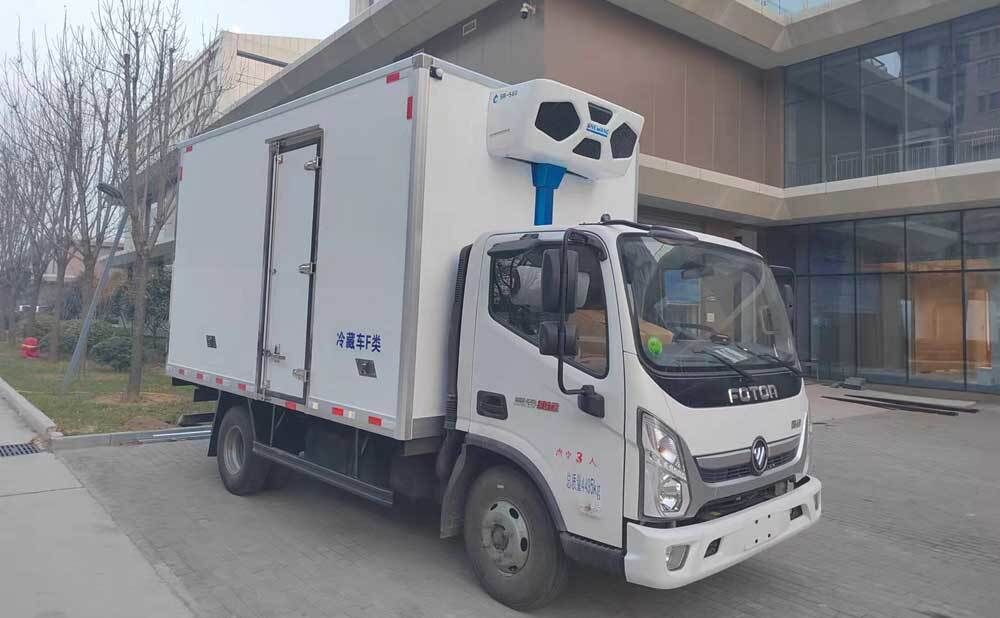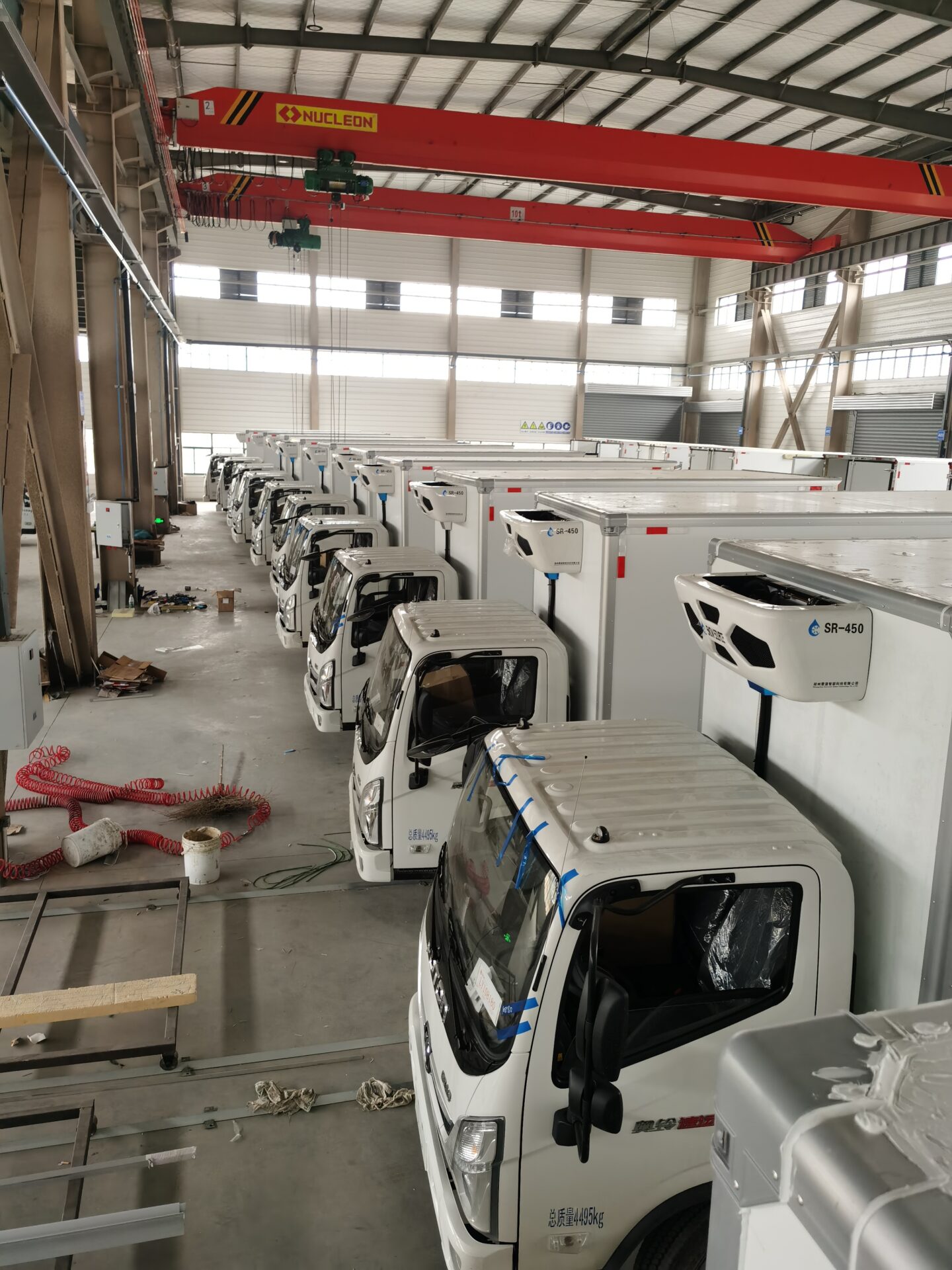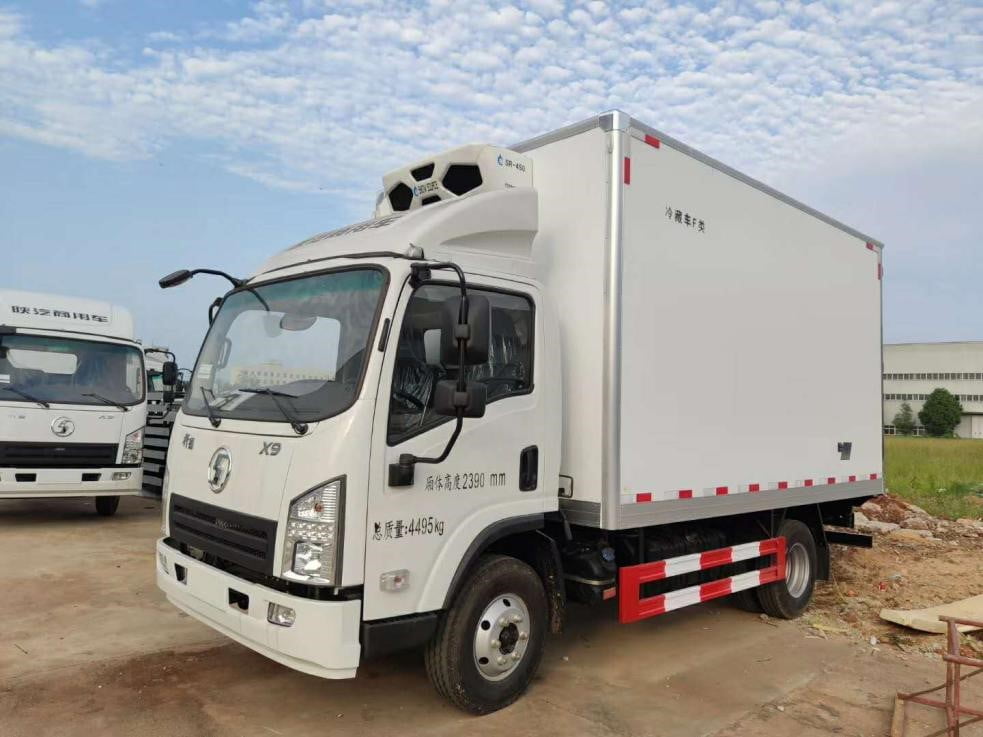The common faults of transport refrigeration units are as follows:
1.Compressor failure
(1) Compressor does not start: The motor does not rotate even after receiving the start signal. Possible reasons include wiring error, motor winding burnout, capacitor damage, etc. The circuit and motor winding should be checked.
(2) Compressor shaking: The compressor vibrates violently during operation. Possible reasons include gas-liquid reflux, pipeline resonance, etc. The expansion valve opening should be adjusted and pipeline support should be checked.
(3) Compressor temperature is too high: The exhaust temperature exceeds 115℃. Possible reasons include excessive return air volume, insufficient condensation, too little lubricating oil, etc. The expansion valve, condenser and oil level should be checked.
(4) Compressor stuck: The motor hums but the rotor does not rotate. Possible reasons include liquid hammer, bearing burnout, etc. The compressor should be stopped for inspection in time.
2. Evaporator failure
(1) Evaporation temperature is too low: The outlet water temperature does not reach the set value. Possible reasons include insufficient refrigerant volume, too small expansion valve opening, etc. The refrigerant volume and expansion valve should be checked.
(2) Frosting of the evaporator: The evaporator surface is covered with white frost, and the heat transfer efficiency is reduced. Possible reasons include too low evaporation temperature, too high air humidity, etc. The expansion valve should be adjusted and the dehumidification equipment should be checked.
(3) Scale on the evaporator: The water side pipe wall is scaled and the flow rate is reduced. Possible reasons include high water hardness, too high water temperature, etc. The water side should be cleaned regularly and the water quality should be softened if necessary.
3. Condenser failure
(1) Excessive condensation temperature: The exhaust pressure exceeds 2.0MPa. Possible reasons include insufficient cooling water, dirty condenser, etc. The water volume should be adjusted and scale should be cleaned.
(2) Condenser leakage: The circulating water has oil stains. Possible reasons include corrosion of the pipe wall, loose pipe joints, etc. The water quality should be checked and the joints should be tightened.
4. Expansion valve failure
(1) Failure of the expansion valve: The return air superheat is abnormal. Possible reasons include valve core jamming, temperature sensor damage, etc. The expansion valve should be replaced.
(2) Insufficient expansion valve opening: manifested by low evaporation pressure, possible reasons include temperature sensor falling off, improper valve adjustment, etc., the temperature sensor should be reinstalled and the valve opening should be adjusted.
5. Refrigerant system failure
(1) Insufficient refrigerant: manifested by low evaporation pressure and high condensation pressure, possible reasons include leakage, insufficient filling, etc., the pipeline should be checked and refrigerant should be added.
(2) Excessive refrigerant: manifested by high evaporation pressure and low return air superheat, possible reasons include excessive filling, insufficient condensation, etc., part of the refrigerant should be released and the amount of condensed water should be adjusted.
(3) Dirty system blockage: manifested by excessive pressure difference before and after the expansion valve, possible reasons include blockage by impurities such as oxides and welding slag, the system should be cleaned and the filter replaced.
(4) Wet system: manifested by foam in the sight glass, possible reasons include incomplete vacuum, water seepage in the pipeline, etc., the vacuum should be re-drawn and the refrigerant should be replaced if necessary.
6. Control system failure
(1) Temperature drift: The actual temperature does not match the set value. Possible reasons include loose temperature sensor, valve failure, etc. The sensor should be calibrated and the actuator should be checked.
(2) Abnormal pressure: The pressure is much higher or lower than the set value. Possible reasons include damaged pressure transmitter, failure of control valve, etc. The transmitter should be replaced and the control valve should be repaired.
(3) Frequent alarms: Various protection alarms appear continuously. Possible reasons include improper parameter settings, failure of detection components, etc. The settings should be optimized and damaged components should be replaced.




